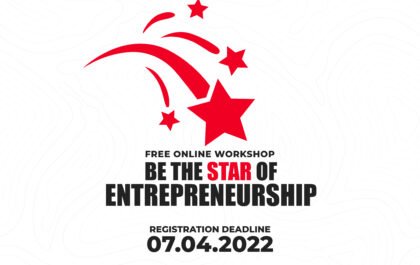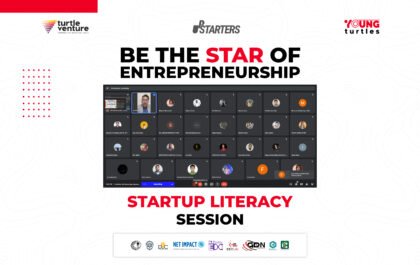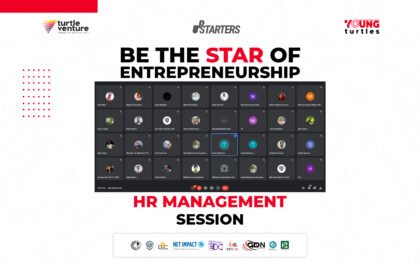For startups, a business model may make the difference between success and failure. A specific business model is followed by every business. The business model follows the growth and progress of a company.
It is therefore important to have a diverse and adaptable business mode It is indeed important to choose the appropriate business model. Early stages require teams to iteratively develop and evaluate business models.
Business design is a basic strategic practice which allows management to reframe and focus on how to compete. But business design also relates to startups, not just an intrapreneur.
There are remarkable examples of businesses that have changed their markets dramatically by developing an innovative business model.
1.Freemium Business Model
The Freemium Business Model is popular with Software as a Service enterprises. A free version of a product or service is provided through a Freemium business model with only limited features. Then c ustomers have to pay to use a complete collection of features
The uniqueness of the freemium business model from a business perspective is its potential to expand exponentially through consumer advocacy. Consumers get the opportunity to first-hand test the services of a company and then spread the word if you like it – particularly because of the complete lack of a price tag.
This phenomenon appears to encourage more powerful word of mouth marketing than normal, the one that professionals know is the most powerful motivator for customers, which can be openly used by the brand as well
Why use the freemium model:
- free features are a potent marketing tool that actively moves people from prospects to potential customers.
- enables you to communicate and build a relationship with potential customers.
- customers get to try before they buy.
- shoppers can make purchases from anywhere, whether in the store, on the couch, or even on the go with their smartphones and other mobile devices.
Examples: YouTube , Spotify , Dropbox
Related business models: subscription business model.
- Ecommerce Business Model
One of the most common and fastest-growing business models is ecommerce. Worldwide eCommerce revenues surpassed $3.5 trillion USD, a rise of roughly 18% from the previous year. By 2023, ecommerce is estimated to have nearly doubled to $6.5 trillion.For many companies, designing an eCommerce strategy is important. Identifying your target market and determining your eCommerce business model are important parts of this process.
While we are all familiar with online shops, E-commerce business models can generally be categorized into the following categories.
- Business – to – Business (B2B)
- Business – to – Consumer (B2C)
- Business – to – Government (B2G)
- Government – to – Business (G2B)
- Government – to – Citizen (G2C)
- Consumer – to – Consumer (C2C)
- Consumer – to – Business (C2B)
Examples: B2B (Alibaba), B2C (Amazon business model), C2C (eBay), C2B (Upwork)
- Razor and Blade Business Model
If you’ve ever bought razors and replacement blades, you’re familiar with this business model. Replacement blades are pricey, but the razor handles are basically free. In the early 1900s, King Camp Gillette, the inventor of the disposable safety razor and founder of the company that bears his name, popularized this strategy
The benefits of a razor and blade model are:
- Companies can gain a competitive advantage by protecting their intellectual property. Competitors are unable to copy their consumable goods manufacturing operation.
- The blade component of the equation generates repeat sales and income
Examples: Hp – printers and ink cartridges ,Nestle Nespresso – coffee machine and cartridges, Kindle reader and Amazon ebooks.
- Reverse Razor and Blade
The key component of the razor and blades business model is the low-cost razor, while the blades are expensive. The reverse razor and blade model reverses that. The key component has a high initial cost, but the consumables, or “razors,” are inexpensive.
The value proposition is based on low-cost consumables – high volume
- Easy to bundle products with the high-cost component.
Examples: Apple iPhones and Apple apps.
- Hidden Revenue Model
A hidden revenue business model is a revenue generation trend that holds consumers out of the equation and prevents them from paying for the service or product offered. Users of Google, for example, do not have to pay to use the search engine. Instead, advertisement money invested by companies bidding on keywords generates revenue streams. .Large-scale advertisers, such as Facebook and Google, are the most frequent users of this model.
The majority of Google’s revenue is generated by companies that use its ad network, for example.
Examples: Google, Facebook, Instagram, Snapchat.
- Subscription Business Model
Subscription business models are focused around the concept of selling a product or service in exchange for annual subscription income, which may be monthly or yearly. They place a greater emphasis on customer retention than on new customer acquisition. Subscription business models, in essence, concentrate on how revenue is generated in such a way that a single customer pays several fees for extended access to a product or service.Most software platforms now such as Amazon Prime, Netflix and others use this model.
- Selling a product or service and receiving ongoing revenue for continuing to provide the service or product is the basis of a subscription company.
- The majority of subscription companies bill on a monthly or annual basis.
- Magazine subscriptions are one of the first and most simple subscription business models to grasp.
- Many companies are transitioning from one-time sales to subscription model as a result of technological advancements.
Business model examples: Netflix, Apple Music, Linkedin.
- Franchise Business Model
A franchise business model is one in which an entrepreneur pays for the right to market a product, good, or service under the franchise’s name. Between the franchisor and the franchisee, there is a franchise partnership. The person who owns the rights to a brand trademark is known as the franchisor. A team of managers will oversee each of this owner’s locations. Franchisees benefit from high-quality brand awareness, professional support/training, exclusive technology, and so on. When faced with the decision of whether or not to franchise, it’s easy to see why most entrepreneurs choose the former. Instead of spending years developing a customer base, franchisees can get up and running quickly by tapping into an existing one.
Examples: Starbucks, Pizza Hut.
- Peer-to-Peer
People-to-people or peer-to-peer transactions and transfers are central to this model. Platforms, in most cases, promote trust between people while also allowing transactions to take place.
PayPal, for example, allows people to transfer money to one another. Another example is Craigslist, which allows users to post products for sale
Examples: Facebook Marketplace, PayPal.
9.Ingredient Branding Model
When a part from one brand is applied to another, the branding of the original brand remains recognizable. This is often the case for B2B2C versions. With the ingredient product, the final product increases the customer’s perceived value.
Example : Microsoft (Office products are included with laptops and PCs), Intel (branding is linked to laptop/PC quality and speed)
Mass Customization
In the days of factories, customizing goods was almost impossible. However, technological advancements have allowed more modular manufacturing, which has resulted in mass customization.
Modular products and manufacturing processes are now prevalent, allowing for product customization. As a result, customers can customize goods to meet their specific needs.
Examples: Subway, Netflix, Apple iPhone, Nike.
A brilliant business model can transform the way your company operates and even decide whether or not it is profitable. Make an effort to think beyond the box. What other options do you have for providing value to your customers? Instead of selling merchandise, how about a subscription model? There’s no limit to what you can do. Maintain an open mind and avoid sticking to the status quo.
Related posts
Subscribe for newsletter
* You will receive the latest news and updates on your favorite celebrities!
Young Turtles 2022 Workshop by Turtle Venture
Turtle Venture is here with a brand new workshop for you to join! The registration for Young Turtles 2022 is…
SHE LOVES TECH Bangladesh 2020
I f you’re a woman entrepreneur, then “She Loves Tech” would be a popular name for you, right? They will…
SELISE Coding Challenge 2020
A re you a coder? Are you bored in this quarantine while looking for opportunities to enrich or test your…
GP Accelerator Startup Talk Episode-1
D ue to COVID-19, it was like life almost had stopped in the earlier days. Though it’s not like that…
bKash Launches bTechWhiz to JumpStart Talent Hunt from University Graduates
The leading mobile financial services (MFS) provider in the nation, bKash, has started a program called “bTechWhiz” to find and…
“Be The Star of Entrepreneurship” Mentorship Sessions: Startup Literacy
The sixth mentorship session of “Be The Star of Entrepreneurship” 2022 was conducted on the 19th of April on Startup…
“Be The Star of Entrepreneurship” Mentorship Sessions: Startup Finance
The fifth mentorship session of “Be The Star of Entrepreneurship” 2022 was conducted on the 18th of April on Startup…
“Be The Star of Entrepreneurship” Mentorship Sessions: Product Design
The fourth mentorship session of “Be The Star of Entrepreneurship” 2022 was conducted on the 16th of April on Product…
“US Patent and Trademark Office Meets MSMEs and Startups” Session Held
A session was held recently on 10th May 2022; organized by iSocial Limited and facilitated by Turtle Venture- regarding…
“Be The Star of Entrepreneurship” Mentorship Sessions: HR Management
The latest mentorship session of “Be The Star of Entrepreneurship” 2022 was conducted on the 24th of April on HR…
“Be The Star of Entrepreneurship” Mentorship Sessions: Fund Raising
The latest mentorship session of “Be The Star of Entrepreneurship” 2022 was conducted on the 28th of April on Fund…
Bangladeshi Startups Getting $750 Million in Foreign Investment
In the last decade, the country has attracted over $750 million in foreign investment in the startup industry, according to…












